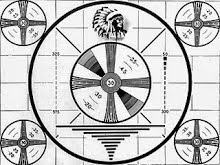
Another great comparison of technology, old and new -- music.
Over the years, I have collected several mediums of music "storage."
We have the 78 RPM Victrola. In our home we listen to Christmas music every Christmas morning on the old Victrola. There were a few early formats that used diamond needles, stainless needles, flat bakelite disks and cylinders (the Edison).
We have several 45 RPM record players and collections of the vinyl disks to go along with them. Most folks have heard of the other vinyl format, 33 long play, Hi FIdelity, etc.
Then there are the magnetic formats, starting with early wire recording - sounds reproduced from a spool of wire, Reel to Reel magnetic tape, then the rare Two Track (the mini-predecessor to 8 Track). Then 8 track, and finally the cassette. Ther are many tape formats still in use, most are digitally encoded.
But from the basic analog formats grew a digital format called Compact Disk. CD's will soon be outdated and replaced by electronic formats.
There are so many electronic formats of music, that I wont even try to list them. But a few are worth mentioning as they laid the ground work for what we listen to today. One very popular format was the MID or MIDI format. The Musical Instrument Digital Interface. By connecting a keyboard or similiar device (synthesizer) to a computer, the music writer could produce life-like sounding music that could be reproduced and shared with the personal computer. Lot's of folks just played scores directly into the computer and then cleaned them up with software. I can remember many years ago listening to classical organ music by the hours that was produced in these formats. If you had the right sound card in your computer that was able to reproduce the pipe organ sounds, the music actually sounded pretty good. However, many folks did not have the right equipment to listen to the music so it sounded very amateurish and game-like. The beauty of MID files was that the files were made up of simply numbers. So the files were very small - on the order of a few Kb even for an extended organ piece. I was please to see that one of my all time favorite MIDI sites is
 still going strong: http://www.classicalarchives.com/
still going strong: http://www.classicalarchives.com/Let's jump ahead several years to the more current music players: These are usually lumped into one category called digital audio or MP3 players. However, many of the devices are using newer audio formats like AAC, WMA, MP4, and others.
My Ipod has a 60 GIG internal hard drive. It stores up to 15,000 songs. Right now I have just about all the music I like - around 1500 songs - the equivalent of 4 straight days of music. If I loaded it full of music I could listen for weeks and never hear a repeat. Actually that would be around 42 days orf continuous music with no repeats. Imagine that.
If there is a point to all of this, consider how FAR we have come in our lifetime in the wonderful world of music storage and playback.
PS. If you can think of another format that I have missed, please mention it here...
